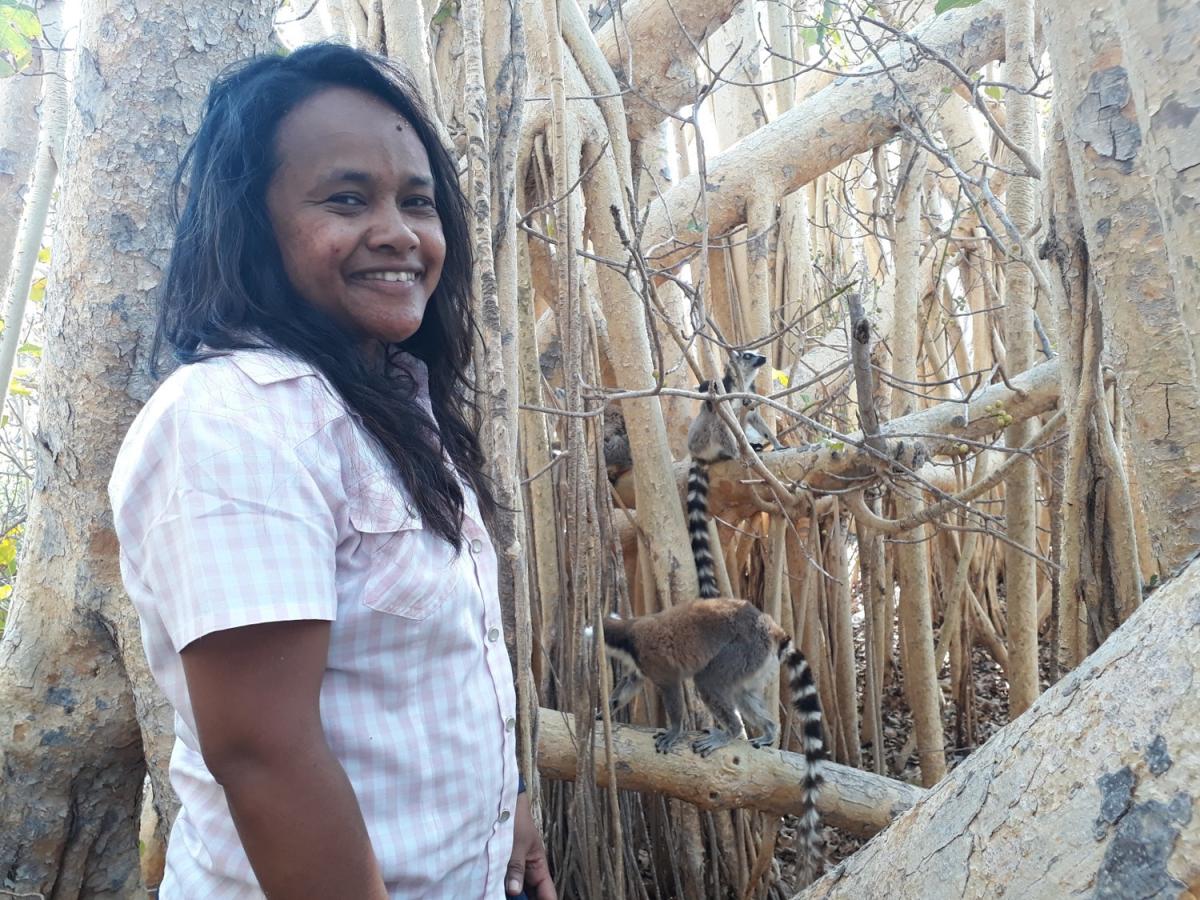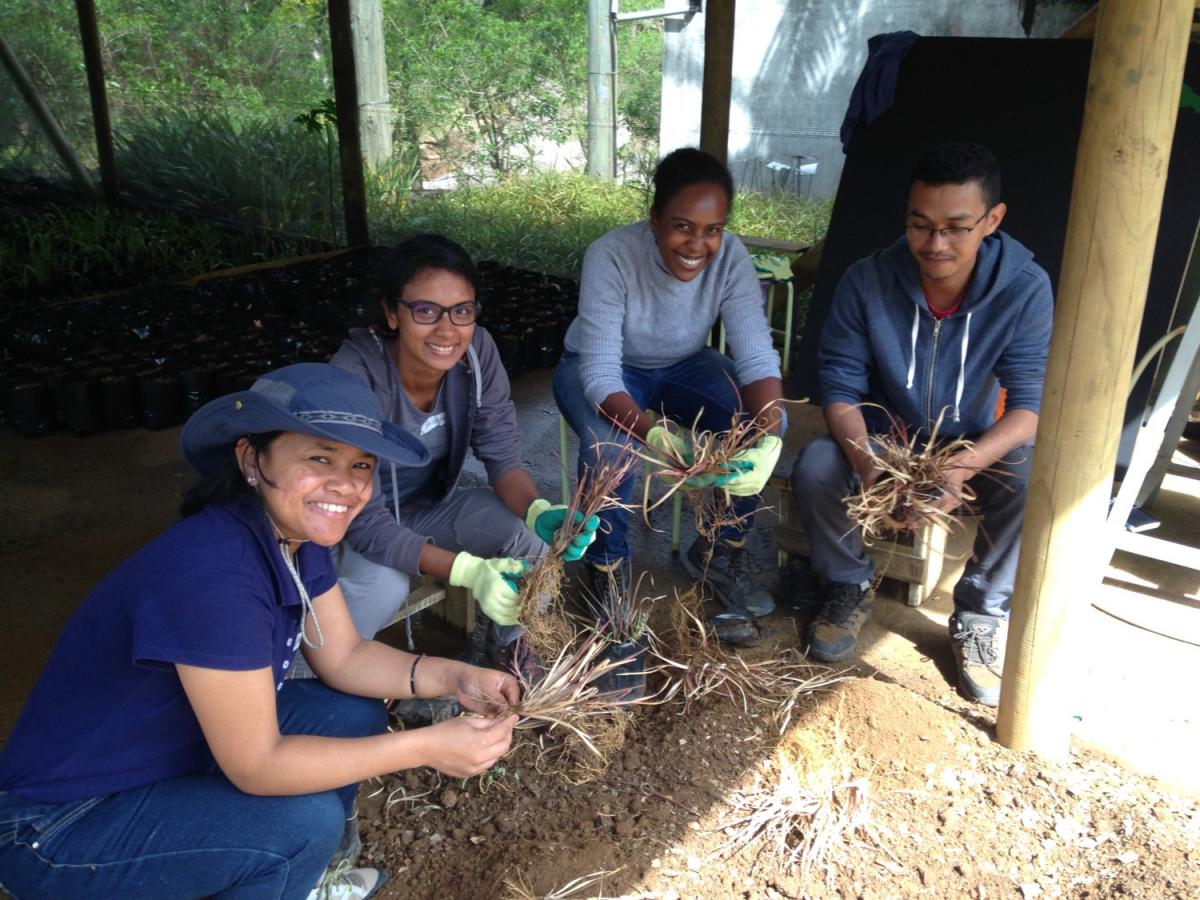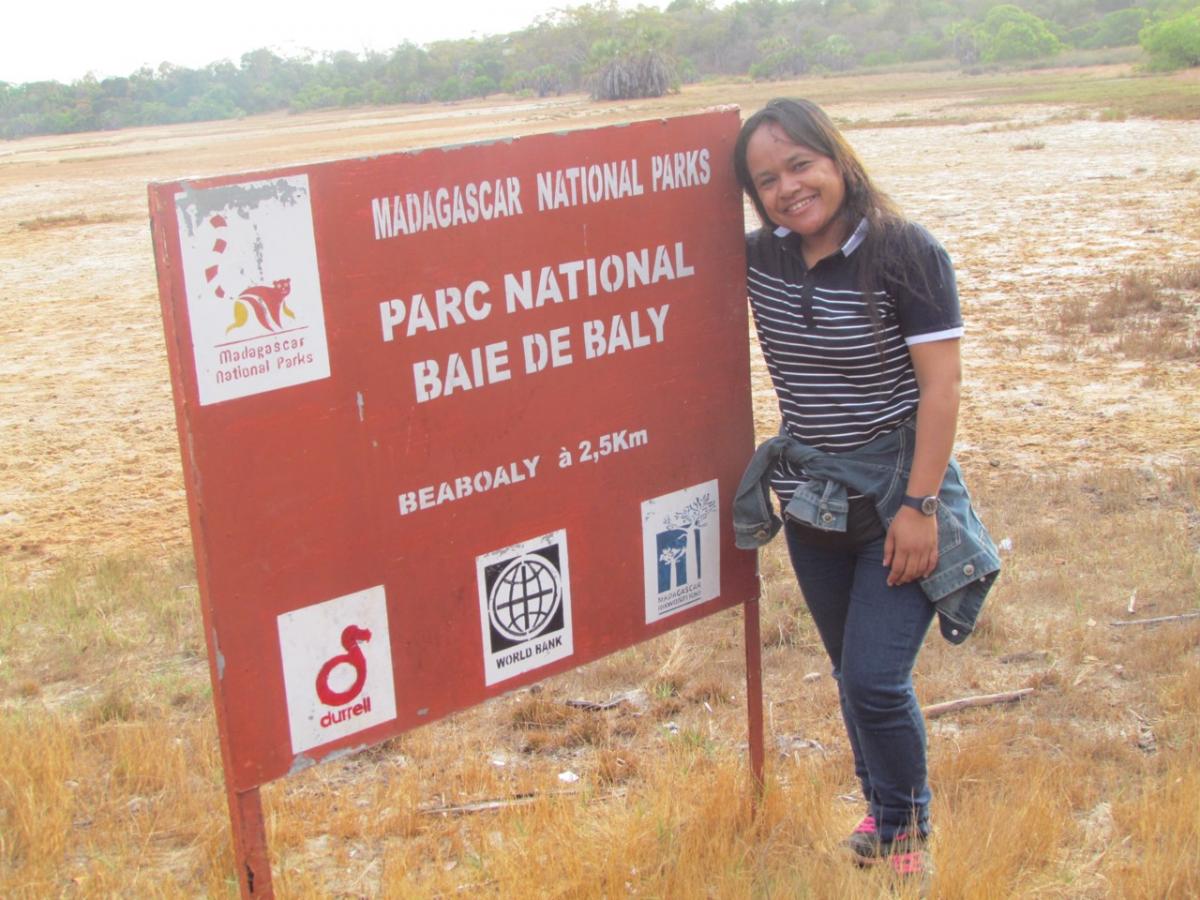An inspring woman in conservation, Liliane Parany
This month, to celebrate International Women’s day and women in conservation, our inspiring person is Liliane Parany. Passionate conservationist, Senior Conservation Officer at the Direction of Operations of Madagascar National Parks and a member of the IUCN Green List Standards Committee, she discussed with us about her job and her favourite place in nature, amongst other things.
What drives you to work in nature conservation?
When you live on an island which houses 5% of the world's biodiversity, a passion for conservation comes naturally. Nature conservation is a multi-disciplinary and multi-faceted field, and for me, I really enjoy working with people. I am convinced that it is the diversity of expertise at all levels and the passion of each and every person that ensures the success of what we do. I am lucky to work in a national network of protected areas here in Madagascar, with more than 27 years of experience, which brings together more than 1,000 collaborators across 43 protected areas in the country and growing with several thousand local communities and stakeholders in our daily work.
What has been your academic and professional path to where you are now?
I first graduated as a Forest and Water Engineer, with first-class honours. Then I completed a Master's Degree in Environmental Sciences and Management in Developing Countries in Belgium and achieved the highest distinction. I also received the prize for the best course for a student from the South from the University of Liège and the Faculty of Agronomic Sciences of Gembloux. Afterwards, I took part in several professional training courses to fully develop my profession (ELTI- Yale University, UVED France, UN-REDD, to name a few).
As Conservation Officer working for one of the most important networks of protected areas in Madagascar, you have achieved so much already but what are you most proud of?
As fire is one of the huge issues on natural forest degradation with its biodiversity, I am proud to have been the pioneer in developing a fire management strategy for our national network of protected areas. It has become an internal tool that we are constantly developing with our multidisciplinary team and local expertise. Through years of experience, we have been able to develop other complementary tools such as an early warning system, a repository of firefighting equipment and supplies adapted to our local context and our means; and networking during very difficult fire situations. And currently, we are improving the early warning system by integrating climate change parameters. Fire management is complex, difficult and costly, but working together with all local teams and relevant stakeholders including local communities is the most important element in this area. I’d like to take this opportunity to recognize the hard work, bravery and expertise of our team on the ground who face fires every year and contribute to the conservation of this planetary biodiversity of Madagascar.
Could you tell us about your involvement with the IUCN Green List?
The approach to achieving excellence in conservation fascinates me the most. I have been working in internationally designated sites management such as World Heritage site, RAMSAR sites and Biosphere Reserves. We are now at 3 multiple international designations areas. This is how I have also found myself working with the IUCN Green List, the only certification at the moment which gives recognition to well-managed and well-governed protected and conserved areas. Madagascar is one of the 7 countries in Sub-Saharan Africa to have joined the IUCN Green List process. I am proud to have been able to support the implementation of this process at the national level with the support of IUCN PAPACO, our Ministry of Environment and Sustainable Development and recently BIOPAMA (through a regional workshop held in Madagascar). We were able to identify potential technical and financial support for the implementation of the process which is currently at the stage of national indicators adaptation. With representatives of the Ministry, protected areas managers and LAFA forum, we carried out exercises based on the Green List Standard and we have been able to identify several elements to be improved in Madagascar's Protected Areas System (SAPM), within 123 sites. Our work shows that the IUCN Green List is not simply a certificate of recognition but also acts as a tool to assist the successful and equitable management of protected and conserved areas!
What is your favourite place in nature?
I work with 43 extraordinary sites and it's a true pleasure to work with them all on a daily basis. It's quite impossible to say which one is the best place! But maybe I could say that Tsimanampesotse National Park surprises me the most. Before going there, I could not have imagined what I would discover there. Apart from the richness of its biodiversity, getting there itself is very exciting (by plane, then by sea and finally by road). Once there, you are rewarded with a whole host of ecosystems, each one as breathtaking as the next (marine with the beach nearby, terrestrial protected areas, wetlands amongst others, simply a complete nice biodiversity landscape). And a beautiful geological landscape! I am proud to have been able to contribute to its multiple international designations (Ramsar Site n°962 and Tsimanampesotse Nosy Ve Androka Biosphere Reserve). Tsimanampesotse also meets World Heritage Site criteria (ix) and (x). The next step would be for Tsimanampesotse to be listed as a World Heritage site so then future generations in Madagascar and all over the world would benefit from its outstanding universal values. It’s a site full of promise!
Any exciting plans coming up?
At the national level, we are implementing forest landscape restoration in Madagascar that will contribute significantly to harmonizing development and conservation for the benefit of people and biodiversity, to improve what we have already undertaken in the past. As a member of the FLR National Committee, I plan to consider more this topic in the future way of intervention.
And during the next IUCN World Conservation Congress we will participate in several exhibitions and sessions. So I would like to invite you especially to our speaker pitch which will address the issues and challenges of gender in nature conservation, based on real-life experiences of several of our female park managers. As a final note, please let me also thank PAPACO IUCN which has enabled me and other young conservation professionals in Africa to develop our know-how and to highlight our national and local expertise.






